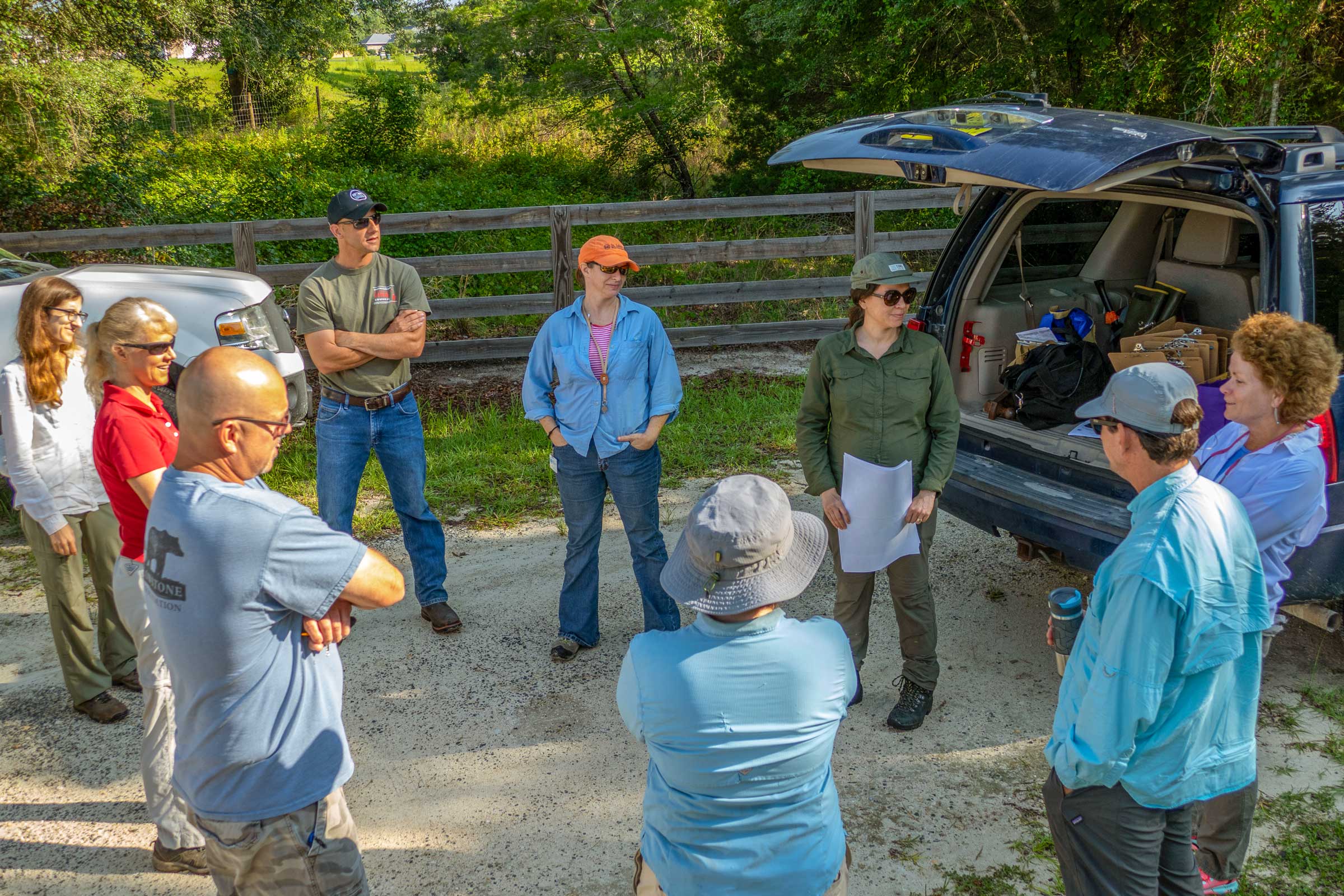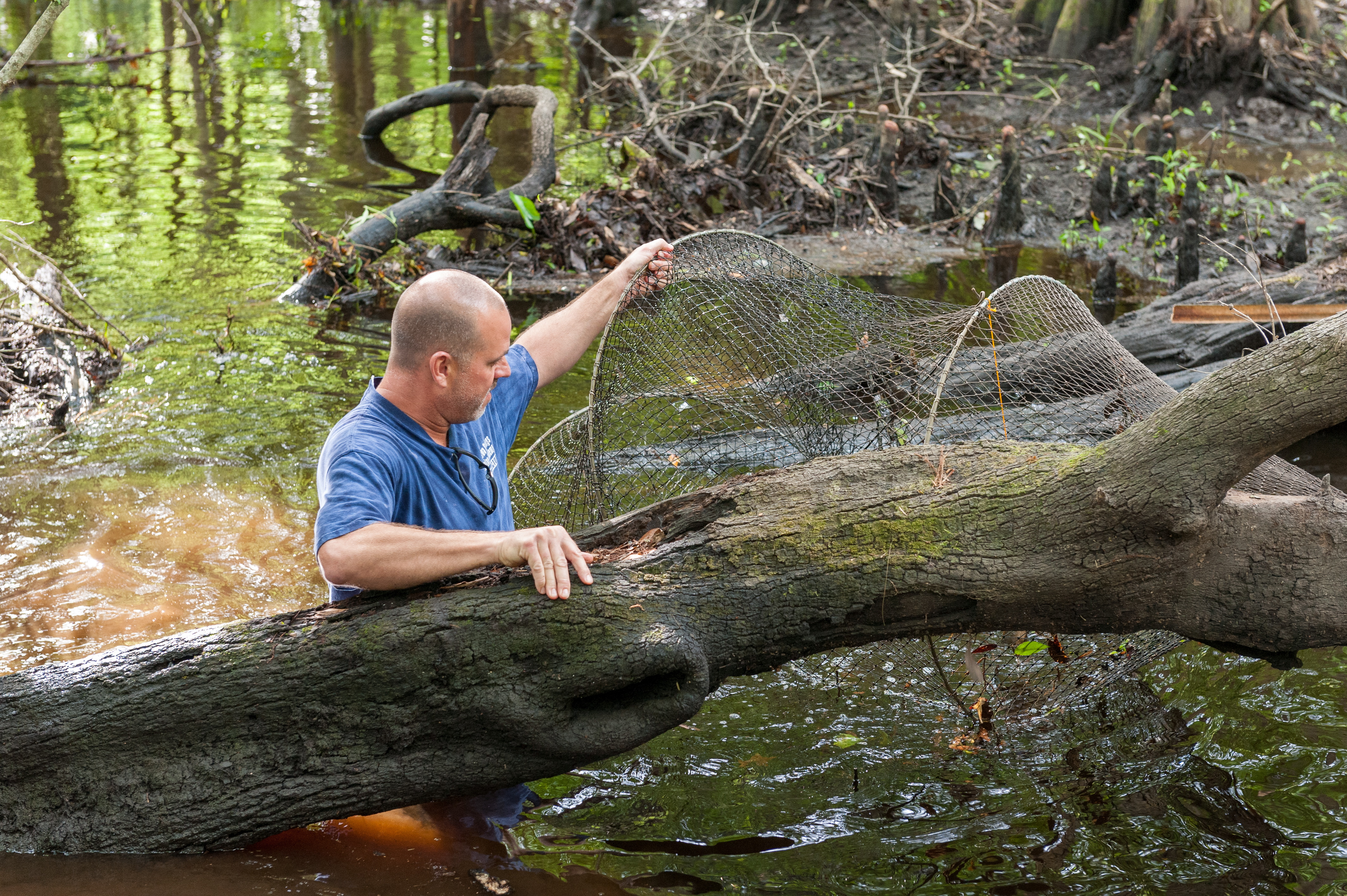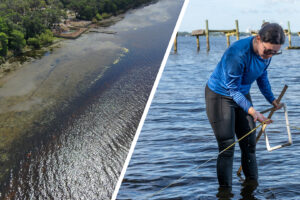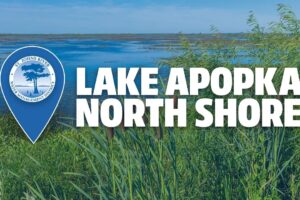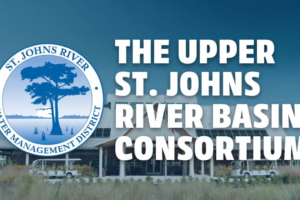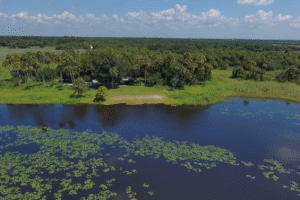Caring for natural resources
Emanuel is briefed, along with other land managers and scientists, prior to a day-long “bio blitz” at the District’s Silver Springs Forest Conservation Area. The team was at the property to gather information on the flora and fauna found on the property to develop a land management plan specific for the condition at this property.
He’s been bitten by rattlesnakes, tangled with water moccasins and, as a boy, pursued anything that crawled or slithered while growing up in Huntsville, Ala.
“I was a NASA brat,” recalls Brian Emanuel. “My dad was a rocket scientist at the Marshall Space Flight Center.”
Emanuel’s passion for science had nothing to do with aeronautics; his calling was closer to the ground, namely reptiles.
“I was catching snakes by the time I was seven years old,” he says. “I’d fall asleep reading reptile and wildlife field guides. I grew up in a suburban neighborhood, but we lived adjacent to a 2,000-acre farm. The creeks behind my house were the secret routes into the farm.”
Emanuel is still fascinated by reptiles, but the backyard grew bigger. A lot bigger. These days, Emanuel is responsible for the management of nearly a half million acres of the St. Johns River Water Management District’s public lands. In total, the District owns or manages 737,500 acres.
The District’s main charge is to protect Florida’s water resources, but sometimes it can only be accomplished by buying land on, near, or surrounding a key water feature. As a result, the public benefits by having access to some of the most breathtaking and oftentimes undisturbed vistas in all of Florida. At the southernmost extent of the District’s jurisdiction is the serpentine boardwalk in the hardwood swamp at Fort Drum Marsh Conservation Area in Indian River County. Roughly 260 miles to the north lies Ralph E. Simmons Memorial State Forest (a District “partnership property” that the District purchased but is cooperatively managed with the Florida Forest Service).
In between Fort Drum and Simmons, 41 District properties exemplify the best of everything natural Florida has to offer: restored marshes, longleaf pine forests, sandhills, scrub land, creeks, springs, lakes and rivers small and large (the 310-miles long St. Johns River being the largest waterway).
Responsible for managing these diverse and widely scattered parcels is Emanuel, who succeeded Steven “Torch” Miller as chief of the District’s Bureau of Land Resources in fall 2018. But he’s not a newcomer to the agency; Emanuel began his District career in 2000, gaining valuable hands-on experience as a land manager. He also shared an office with Miller for 12 years, continually learning from the man who always seemed to wear several hats at once.
“Brian brings a wealth of experience with District lands and the team responsible for their care. I’m excited to have him step into the chief position,” says Erich Marzolf, director of the District’s Division of Water and Land Resources.
“The most important thing is to build a good team, which is already in place. We have, over the years, built a dedicated, talented and diverse group of land stewards,” Emanuel says. “This bureau gives staff who work daily with the properties in their region the leeway to make many decisions on their own, although I am always ready to provide guidance when necessary.”
The District accomplishes its land management tasks with lean staffing: there are only six regional land managers, a forest manager, recreation manager and a handful of specialists and technicians who manage the District’s widespread public lands over 18 counties.
“The bureau works like a well-oiled machine,” Emanuel says. “Our team members play many roles: firefighter, biologist, forester and good neighbor. At the same time, they serve as a sounding board for public concerns and have built solid relationships with many neighbors, organizations and user groups.”
At first glance, it might seem that managing a half million acres of District land would be as simple as posting signs, clearing a parking lot and erecting fences. In reality, there are a multitude of issues with which to contend: security, determining the most appropriate recreational uses for each property, maintaining trails, kiosks and other structures, managing invasive plants and animals, implementing restoration projects and minimizing the chances for wildfires by establishing a prescribed fire schedule.
Keep in mind, District lands are unlike a state or county park system where recreation is the primary purpose. You won’t find “on-site” rangers to maintain a specific property. Yet, District land management staff maintain 41 conservation areas, more than 100 trailhead parking areas, more than 50 campsites, 300 miles of trails and a multitude of picnic pavilions, observation towers, boardwalks and related structures.
“We aren’t the state parks that might sometimes have long lines or crowds,” says District Land Manager Nels Parson. “Julington-Durbin Preserve (in Duval County) has hundreds of users a day but most District lands receive daily visitors numbering in the single digits. They are little-known gems. There may be 20 million people in this state, but you can get away from them on District lands.”
For Emanuel, the key to successfully managing public lands is determining that delicate balance between the most appropriate recreational use of a property while maintaining its biological diversity and integrity, and advancing the District’s core missions. The headwaters of the District are mostly floodplain marsh and open water, which lends itself to bass fishing and airboating, while other properties are suited for birdwatching, horseback riding, hiking and bicycling.
“We even offer primitive camping, but we fill a different purpose than state parks,” Emanuel says. “Our properties mostly contain multiple small access points, no vehicular access and lack a concentrated use where crowds gather, such as a spring.”
The only anomalies may be a seasonal interpretive drive at Emeralda Marsh Conservation Area in Lake County and the wildly popular wildlife drive at Lake Apopka North Shore. Since opening in May 2015, the wildlife drive attracts an average of 10,000 visitors a month. The 11-mile drive covers a network of wetlands, levees and canals, providing a variety of wildlife viewing opportunities. A free self-guided audio tour, which can be streamed through mobile devices and online, is also available along the wildlife drive and provides visitors with a narrative on the area’s history, wildlife and District-led restoration efforts.
However, the majority of District lands receive a trickle of daily visitors, prompting the agency to promote its best-kept secret.
In 2019, the District is celebrating its recreational offerings with an educational campaign, “Love your Lands.” The goal is to raise public awareness about District lands with online articles, social media posts and videos throughout the year.
“While our main mission is to protect Florida’s water resources, another public benefit is the free access to land and camping that we offer,” Emanuel says. “There are so many special places to experience and explore.”
Winter in Florida is the best time to explore what we have to offer. Start by visiting our property listing to find the District lands and activities closest to you.


